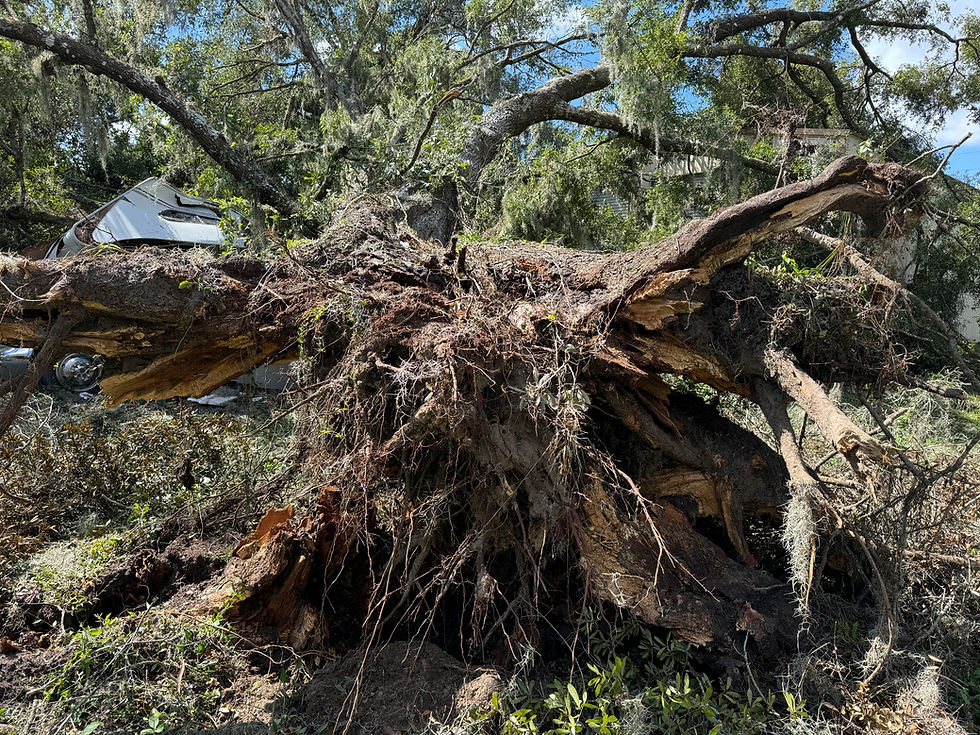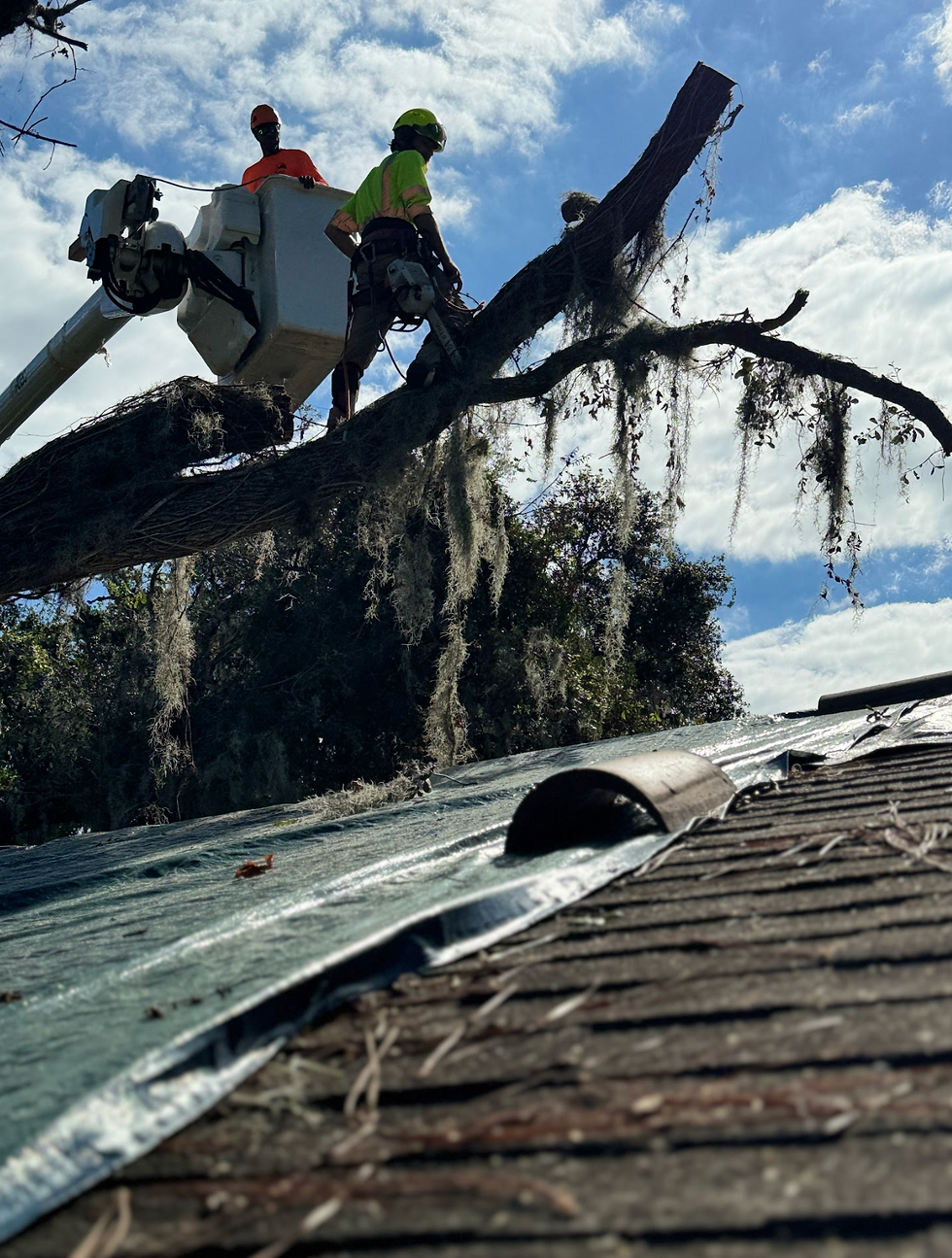The Hidden Dangers of Tree Roots: How They Can Damage Your Home and What to Do About It
- Oliver Owens
- Aug 1
- 4 min read
We love our trees in Florida. They give us shade from the heat, bring beauty to our yards, and provide privacy from the neighbors. But here’s the thing no one tells you when you’re planting a gorgeous new oak: sometimes the biggest problems start underground.

At All Your Way Tree Service, we’ve seen our fair share of root-related chaos. From cracked foundations to mysterious plumbing issues, invasive root systems can cause serious (and expensive) problems if they’re left unchecked. Most homeowners don’t even realize what's happening until it’s too late.
This blog is your guide to spotting root trouble early, understanding how roots behave, and knowing what to do before your yard—or your house—starts fighting back.
How Tree Roots Grow—and Why That Matters
Let’s clear something up: tree roots don’t grow deep. They grow wide.
In fact, most tree roots stay within the top 18 inches of soil and spread out horizontally—often two to three times farther than the tree’s canopy. That means a tree that looks a safe distance from your house might actually have roots creeping under your walkway, driveway, or even your foundation.
And in Florida’s soft, sandy soil? That growth happens fast.
Common Signs Tree Roots Are Damaging Your Property
We’re not talking about giant roots bursting out of the ground (though that does happen too). A lot of root damage is sneaky at first. Here’s what to watch for:
1. Cracked Driveways and Walkways
If your concrete is suddenly splitting or uneven in places, roots could be pushing upward from underneath. We’ve seen entire sidewalks buckle because of palm and oak roots growing undisturbed for years.
2. Slow Drainage or Backups
Tree roots love to find tiny cracks in sewer lines—and once they’re in, they grow like crazy. If your drains are backing up or gurgling often, the issue might not be your plumbing—it might be a nearby tree.
3. Foundation Shifts or Cracks
Large roots can disturb the soil under your home’s slab, causing it to shift unevenly. That leads to cracks in your walls, sticking doors, and other structural issues. (Trust us—foundation repairs aren’t cheap.)
4. Raised Patios or Pavers
Are parts of your patio or paver walkway suddenly higher than others? That’s a classic sign of root interference.
5. Sudden Tree Leaning
If your tree is growing too close to a structure and starts to lean, it could be a root problem—or worse, the root system might be failing entirely.
A Real Example from Right Here in Florida
We once had a client in Plant City who called us about a “weird dip” in their front lawn. It didn’t seem like much at first—just a soft spot near the sidewalk. But once we did an inspection, we discovered roots had grown under their concrete porch, lifted a section of it, and caused enough structural stress to shift one corner of their home’s foundation.
Had they waited even a few more months, the damage would’ve been triple the cost. The worst part? The tree was planted only 10 years earlier, right after they moved in. It doesn’t take long.
Which Trees Cause the Most Damage?
Not all trees are root troublemakers. But some are notorious in Florida for their aggressive systems.
Live Oak – Beautiful and strong, but they have massive lateral roots that can stretch far.
Ficus – Fast-growing, shallow-rooted, and known to destroy sidewalks.
Silver Maple – Grows rapidly and seeks out moisture—hello, sewer lines.
Camphor Tree – Known for root suckers and lifting structures.
Bamboo – Technically a grass, but its root system can travel yards underground.
If any of these are growing close to your house or paved areas, it might be time for a proactive root check.
Can You Stop Roots from Causing Damage?
Yes—but it’s all about timing and method.
1. Root Pruning
Trimming roots is possible, but it has to be done carefully. Cut the wrong roots and you can destabilize the tree. This should only be done by a certified arborist who knows where and how deep to cut.
2. Root Barriers
Installing physical root barriers (especially during new planting) can redirect roots away from structures and plumbing. These can be added later too, depending on the situation.
3. Tree Relocation or Removal
Sometimes the safest (and most cost-effective) solution is to remove the tree altogether—especially if it’s a high-risk species planted too close to the house.
What’s the Right Distance for Tree Planting?
A general rule of thumb is to plant trees at least as far away from a structure as the tree’s expected mature height. So if a tree will grow 40 feet tall, plant it 40 feet away.
Here’s a quick guide:
Small Trees (under 20 ft): 10–20 feet from structures
Medium Trees (20–40 ft): 20–40 feet away
Large Trees (over 40 ft): At least 50 feet away, preferably more
Also, avoid planting near driveways, sidewalks, and especially septic tanks or drain fields.
Preventing Root Damage to Pipes and Plumbing
Tree roots are one of the top reasons for plumbing issues in older Florida homes. Clay or concrete sewer lines are especially vulnerable.
Here’s how to reduce the risk:
Use pipe sleeves or root barriers around new plumbing installations
Have a yearly sewer camera inspection to catch root intrusion early
Know where your sewer lines run before planting new trees
Install cleanouts so root removal (if needed) can happen faster and with less digging
👉 Check out this guide on root damage and plumbing from Tree Care Industry Association —a free, educational resource for homeowners.
When Should You Call a Professional?
If you notice:
Cracks in your walls or driveway
Slow drains or recurring backups
Trees growing close to structures
Leaning or unstable trees
Sudden dips or humps in your yard
...call us. The earlier we catch root issues, the more options you have. We can inspect, trim, redirect, or remove as needed—without unnecessary damage or drama.
The Bottom Line: Tree Roots Need Watching
A healthy tree adds value. But one with root issues? That’s a slow-moving disaster.
By catching the warning signs early and getting help from a certified arborist, you can protect your home, save money, and enjoy your yard without worry.
At All Your Way Tree Service, we’re not just in the business of cutting trees—we’re in the business of keeping properties safe, one root system at a time.
📞 Contact us today if you’ve got questions, need an inspection, or want a second opinion.



















تعليقات